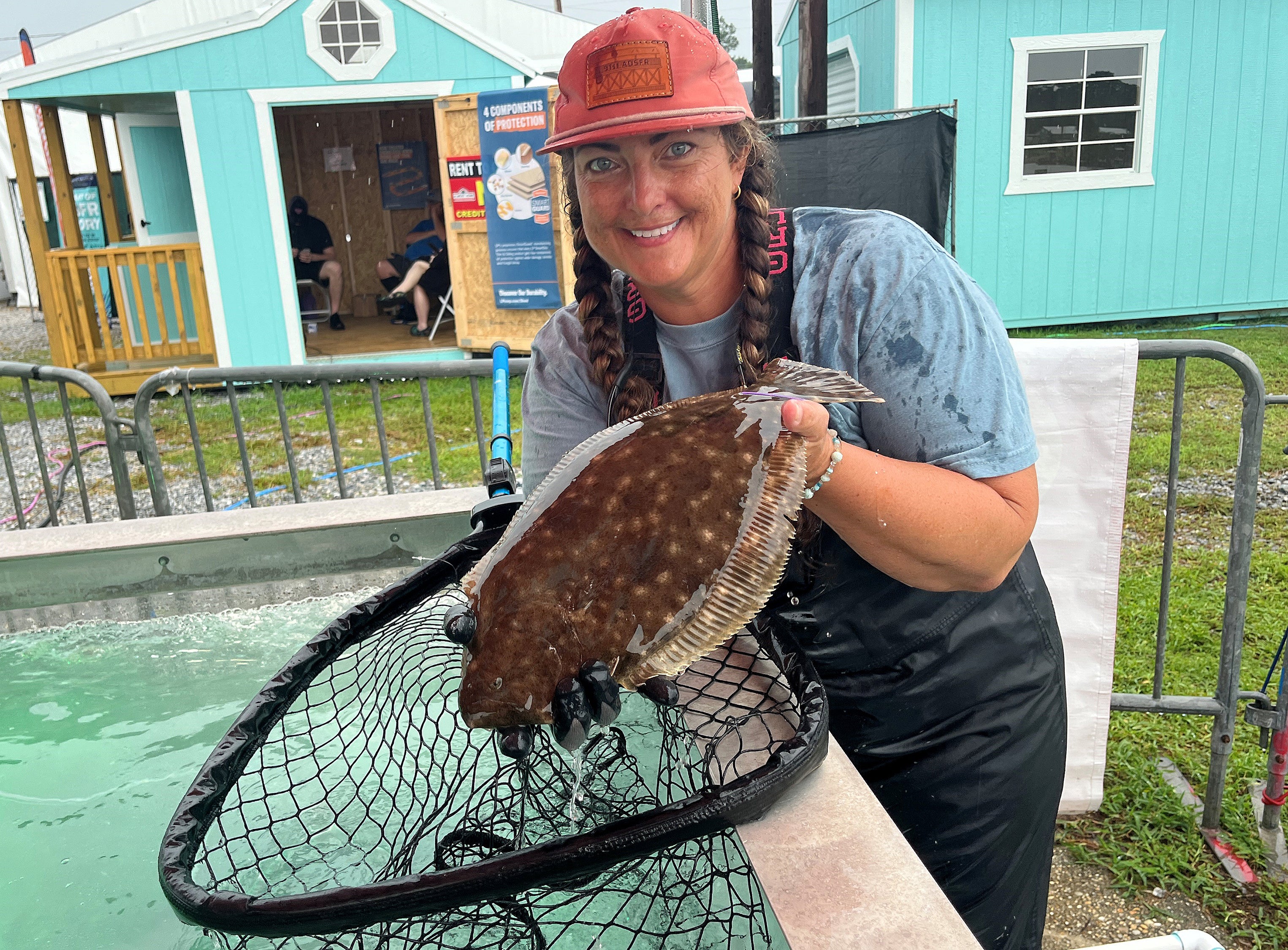By DAVID RAINER, Alabama Department of Conservation and Natural Resources
Nobody was more pleased when the 91st Alabama Deep Sea Fishing Rodeo (ADSFR) added flounder to the CCA Alabama Live Weigh-In competition than Dr. Sean Powers, head rodeo judge and Director of the Stokes School of Marine and Environmental Sciences at the University of South Alabama.
Powers watched the southern flounder populations plummet in the 2010s and has witnessed a gradual rebound of the populations. He said the last four years of flounder catches at the ADSFR are encouraging.
“I’m particularly excited about flounder at this year’s rodeo,” Powers said. “Five years ago was the low point. We had 24 flounder total weighed in at that rodeo. Now we’re approaching 100 fish weighed in again.
“We see some evidence (of the rebound) in the stock assessment and the fisheries independent surveys that Marine Resources Division uses to survey the population. We’re seeing more and more flounder.”
Biologist John Mareska of the Alabama Department of Conservation and Natural Resources’ (ADCNR) Marine Resources Division (MRD) joined the marine scientists sampling a variety of species of fish caught at the rodeo, with MRD’s focus on flounder.
“The reason we’re sampling flounder is that our Claude Peteet Mariculture Center has been stocking flounder for several years, and we’re trying to determine the survival of those flounder and the influence of the genetics on the flounder stock from our stocking program,” Mareska said. “We have collected DNA and sent it off to a lab, and they have assured us they can detect the offspring from wild-caught fish. With the DNA from the wild-caught fish, we can determine what percentage of the fish we sample is coming from our hatchery.”
In conjunction with CCA Alabama, more than 250,000 flounder fingerlings spawned at the Claude Peteet hatchery have been released into Alabama coastal waters since the program began in 2020.
Powers said several factors could be involved in the flounder rebound, including changes to the flounder harvest regulations instituted in 2019 that reduced the flounder bag limit to five fish with a minimum length of 14 inches and a complete closure of the season during the month of November to protect the fish during the spawning migration.
“We think it’s a combination of good environmental conditions of the last few years as well as the new rules and regulations that Marine Resources has put in effect,” he said. “And we’re trying to determine the effect of the fingerling releases. Flounder, southern flounder, is a species that had been driven so far down that we think the hatchery can have an impact.
“And it’s not just in Alabama. Southern flounder are in trouble from Texas all the way to North Carolina. We think it has something to do with the environment. Environmental warming is not favorable for flounder.”
Powers said the marine science community can’t pinpoint why the flounder population crashed, which occurred right after the Deepwater Horizon oil spill.
“There is a lot of speculation in different areas,” he said. “For some people, it’s coincidental with the oil spill. The real crash occurred in 2011 and 2012. But that wouldn’t explain why the populations are down from Texas to North Carolina. I think a warming bay is just not that conducive to flounder. Flounder have temperature-specific sex determination that can skew your ration of males and females. Warmer temperatures tend to masculinize a population of flounder.
“The other thing is flounder is an easily exploitable species. Because flounder make a big offshore migration, one of the key things that MRD did was the November closure. Those fish are congregating and going offshore. Now we have other states looking at what Alabama did as far as regulations go. After our next stock assessment, we’ll be able to determine if it has been good environmental conditions or is it the changes to the population management.”








